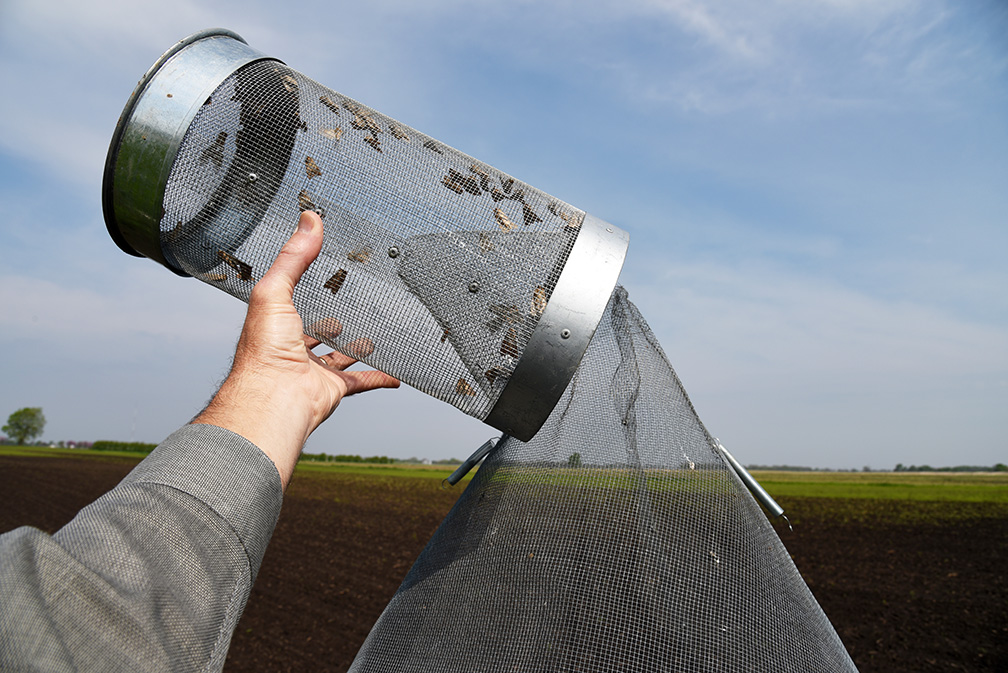In looking over the black cutworm and armyworm pheromone reports, it is obvious that many moths have arrived into Indiana. Thanks to our trapping cooperators throughout the state! Still, at this point, many variables must perfectly align for these pests to cause a stir in high-risk fields.
First, understand that eggs are now just being laid on preferred plants. Armyworm are seeking lush grasses (e.g., wheat, cereal rye) while black cutworm target winter annual broadleaves (e.g., chickweed, dandelion). Currently, those fields are in abundance because of the typical spring-like conditions. After hatch, which takes about a week, the young larvae are most vulnerable to natural and man-made events. They are very prone to dramatic weather events, and natural enemies, e.g., ground beetles. They need a constant and healthy food source, only available if field work/herbicides are delayed for multiple weeks. Their death rate, even under ideal conditions, is very high.
Monitoring moth arrival, and numbers captured, is an inexact science. We cannot predict with certainty that high moth counts, which we are currently experiencing, will equate to high pest damage. Instead, it is best to understand the pest and how the next few weeks unfold. Stay tuned!



